our farm
Our story began in the early 1990s. Dave, Terry, and one-year-old Anthony moved to this beautiful farm in Blair County’s Morrison’s Cove Valley. Returning from nearly two years in missions in Honduras, Dave had a dream to manage his own dairy farm, just like his father had in Bucks County. When they bought this farm, they named it Ojala Farm. Ojala is a Spanish word that means “may God grant you the desires of your heart.”
A few years later, around the time of the birth of Yolanda – their oldest daughter – Dave and Terry decided to make some changes. They converted the farm from a conventional feeding system to a grazing farm. Their passion for good life and health was something they wanted for their cows as well. A grazing system allows them to work symbiotically with the cows and the land. The farm allows both people and animals to enjoy the outdoors: whether green grass and sunshine or rain and mud.
Dave and Terry knew that grass-fed and pasture-raised cows give a higher-quality and better-tasting milk. However, the co-op that purchased their milk did not pay more for grass-fed milk. As their family grew to include Jesse, Austin, and Vannika, they knew they needed a better price for the milk for their family farm to survive. Dave and Terry began attending classes around milk processing — making yogurt and cheese. They also applied to the Pennsylvania Department of Agriculture to get a license for selling raw milk.
processing milk
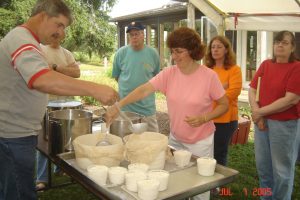
Making yogurt held their interest, but yogurt had a short shelf life, and they would have to transport it several hours to find the ideal market. Dave and Terry decided that our story should focus on cheese. Hard cheeses can be stored for years and only improve with age. Cheese also transports more easily. They began to visit cheesemakers throughout Pennsylvania and the surrounding states. As they spoke with cheesemakers, they heard one story over and over. As complicated as it may seem, making cheese is not the most difficult part of processing your own milk. Developing a market and selling all the cheese they made proved far harder than the cheesemaking process, according to the cheesemakers.
making cheese
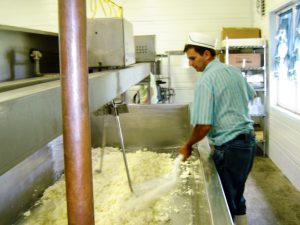
On their travels, Dave and Terry visited Whispering Brook Cheese Haus, run by Ed Brechbill and his family. They appreciated the family aspect of the Brechbill’s business and the cheeses that Ed made. In 2005, Dave and Terry decided to try out the cheese selling business. The Rice family formed Clover Creek Cheese Cellar, named after the creek that flows through the pastures on the farm. They shipped a small tanker truck of Ojala Farm’s milk to Ed Brechbill, who processed the milk into cheese for them. Then, Dave, Terry, and their children began attending farmers’ markets and festivals to sell the cheese.
Whispering Brook Cheese Haus made several batches of cheese for them throughout 2005 and 2006. As the Rices began to find that there was a market for their farmstead cheese, they decided that it would be worthy of the investment to build their own cheese creamery. In the early months of 2007, they tore out the old head-lock flat parlor underneath the hay barn. Pouring new concrete and putting up walls, they converted the area into space for making and aging cheese. They also purchased an old milk tank from a local retired farmer to use as a cheese vat. At the end of May 2007, they made their first batch of cheese.
our story continues
In 2014, with Anthony newly graduated with a Penn State degree in Agriculture Business, the company decided to remodel their creamery for growth. They purchase a large cheese vat and expanded their aging space. In 2017, Clover creek Cheese Cellar stopped shipping milk to a milk co-op and began processing all of their cows’ milk. The Rices still raise their herd of Milking Shorthorns, Jerseys, Ayrshires, and crossbred cows on pasture. They bottle some of their grass-fed raw milk to sell on the farm and in several stores and farmers’ markets throughout Pennsylvania. They turn the rest of their milk into farmstead artisan cheeses. As the years pass, they are continually tweaking their process to make every batch of cheese better than the last so that you can taste the flavor from the greener side of the fence.
Want to learn more about our cheesemaking process? Read one of the blog posts below:
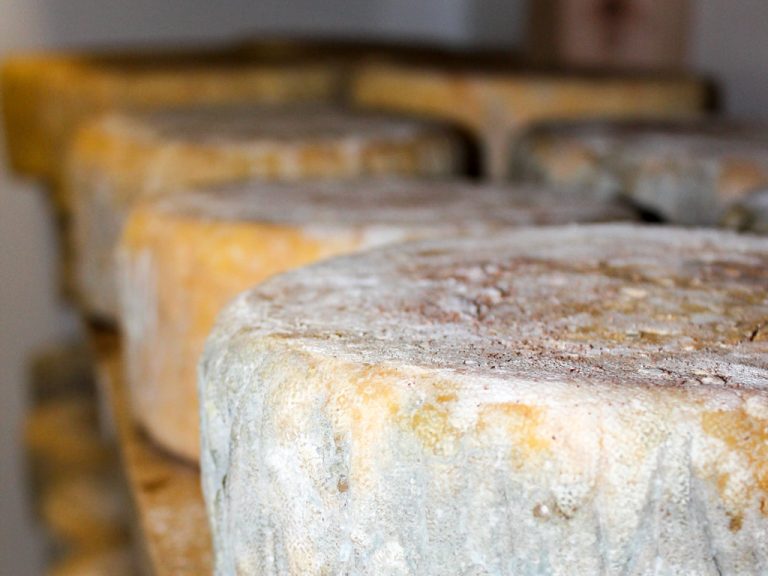
Affinage and Aging – How We Make Cheese
Affinage is a French word that refers to caring for cheese as it ages. The aging process is where our cheese matures and develops its awesome flavor. We make our cheeses in an artisan European style. Cheese factories suffocate cheese in vacuum pack bags right after they come out of […]
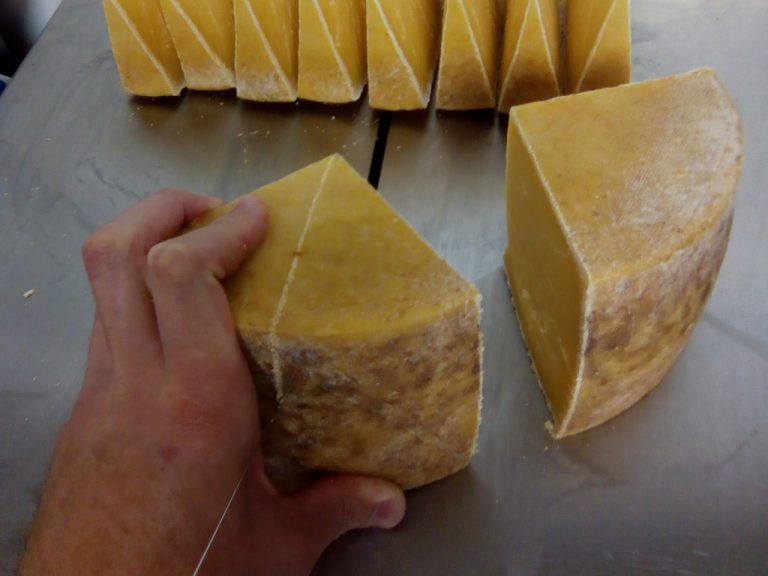
Packaging! Packaging! Packaging! – How We Make Cheese
When we started making cheese, we packaged each retail wedge by coating it in wax. We burned our fingers a few times dipping the cheese, but packaging this way wasn’t too difficult. Then a few customers complained that the wax would crack and later they would find mold underneath. We […]
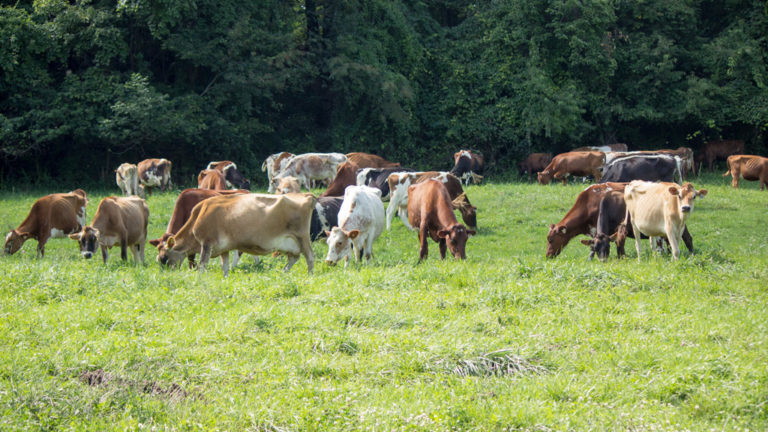
Where Quality Begins: A Morning Milking
Have you experienced that peaceful feeling of waking up at dawn, when the world is still quiet and full of promise? That’s how each morning milking for a cheesemaking day begins at Clover Creek Cheese Cellar. Before you’ve even poured your first cup of coffee, Dave is pulling on his […]